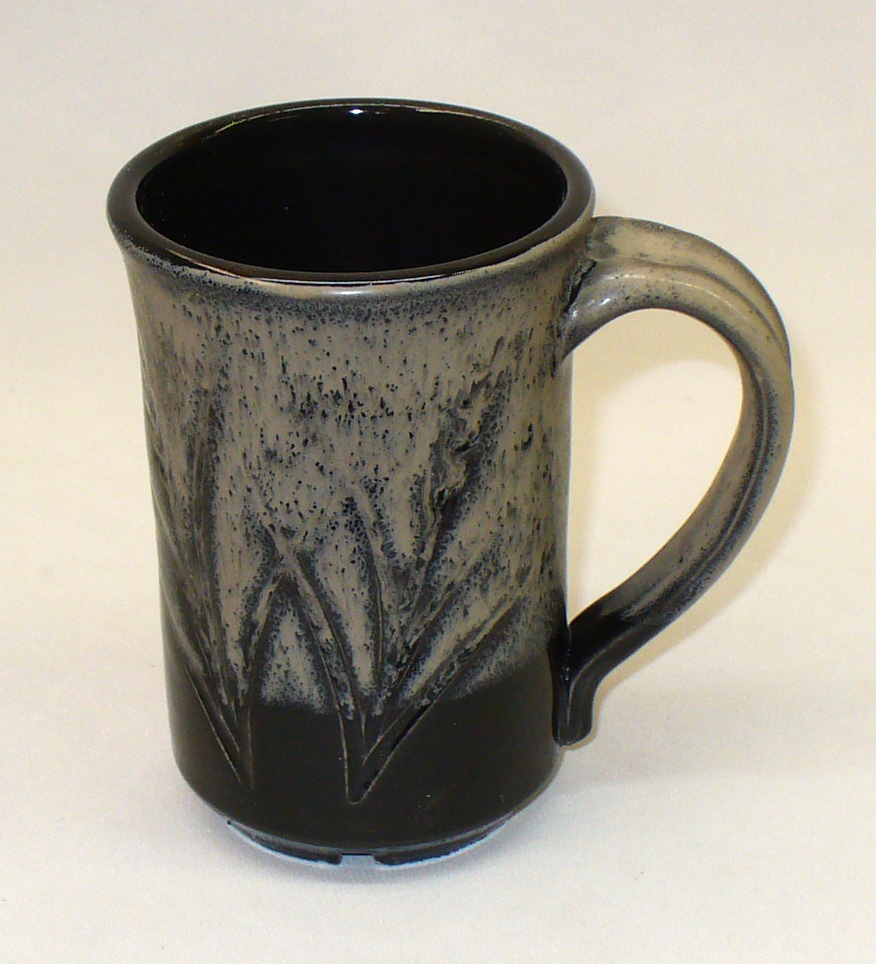| Monthly Tech-Tip | No tracking! No ads! | |
GR6-H Ravenscrag Oatmeal glaze cone 6
At various thicknesses on M340, M370, P300. Fired at cone 6 oxidation using the C6PLST firing schedule.
For speckle add granular manganese (adjust the percentage to get the desired speckle density, start at 0.25%). Since the manganese particles are very heavy, and thus want to settle out, the glaze slurry should be thixotropic and stirred before each dip.
Related Pictures
Cone 6 black with a second layer of oatmeal glaze

This picture has its own page with more detail, click here to see it.
The underglaze is G1214M cone 6 black (adds 5% Mason 6666 black stain). Overglaze left: GR6-H Ravenscrag Oatmeal. Overglaze right: GA6-F Alberta Slip oatmeal. Both produce a very pleasant silky matte texture (the right being the best). Both layers are fairly thin. In production it would be best to spray the second layer, keeping it as thin as possible. It is also necessary to adjust the ratio of raw to roasted Alberta or Ravenscrag Slips to establish a balance between drying hardness but not too much drying shrinkage (and resultant cracking).
Ravenscrag Cone 6 GR6-H Oatmeal over 5x20 cone 6 black

This picture has its own page with more detail, click here to see it.
The black recipe was made using G1214M with 5% Mason 6666 stain. The oatmeal overlayer is 50% the thickness of the black. The more fluid under-black comes through leaving islands and vertical rivulets of the stiffer oatmeal. Good control of the glazing process is needed to get consistent results using this approach.
Ravenscrag oatmeal layered over black at cone 6

This picture has its own page with more detail, click here to see it.
This is GR6-H Ravenscrag Slip oatmeal over G1214M black on porcelain at cone 6 oxidation to create an oil-spot effect. Both were dipped quickly.
Videos
Links
| Recipes |
GR6-H - Ravenscrag Cone 6 Oatmeal Matte
Plainsman Cone 6 Ravenscrag Slip glaze. See more at ravenscrag.com. |
Got a Question?
Buy me a coffee and we can talk

https://digitalfire.com, All Rights Reserved
Privacy Policy

